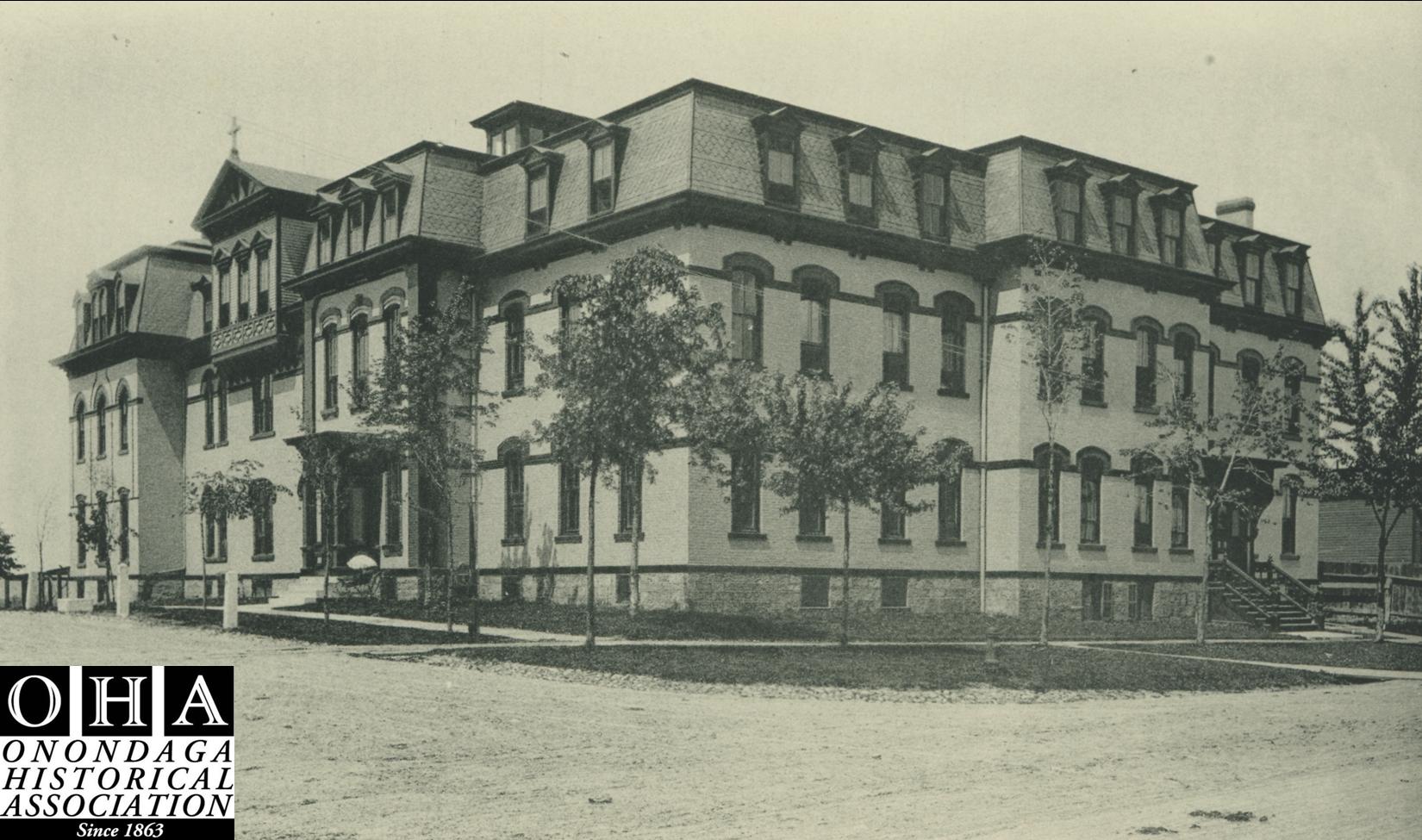
On May 6th, 1869, St. Joseph’s Hospital opened on Prospect Hill founded by five Sisters of the Third Franciscan Order as the first hospital in Syracuse open to the public. The property, which formerly contained an old saloon and dancing hall, was purchased on April 12th of the same year for $12,000 and was renovated in less than a month. With just fifteen beds and no funds, the five sisters cared for 54 patients by the end of 1869, the first of which was D.W. Daley on May 13th. In 1870, Sister Marianne Cope (who was canonized by Pope Benedict XVI at the Vatican on October 21st, 2012) was placed in charge of the hospital and served as head administrator for six years. The school of nursing opened in 1898 and the first class of seven nurses graduated in 1900. Today, there are nearly 400,000 visits to St. Joseph’s primary care and integrated practice and hundreds of thousands more served through its other programs.
Who was Sister Marianne Cope? (via St. Joseph’s Hospital)
Saint Marianne, formerly Barbara Koob (1838-1918), was born in Germany and grew up in Utica. Her family was a member of St. Joseph’s Parish where she went to school and was confirmed. Even at a young age, she wrote about a religious calling.
She joined the Sisters of Saint Francis in Syracuse in 1862 and was invested at the Church of the Assumption where she was given the name Sister Marianne. In 1869, she became a founding leader of St. Joseph’s Hospital, the first hospital opened to the public in the City of Syracuse. The hospital had a unique charter for its time – open to caring for the sick without distinction as to a person’s nationality, religion or color. St. Joseph’s Hospital was among the first 50 general hospitals in the entire U.S.
Saint Marianne served as head administrator for six of St. Joseph’s Hospital’s first seven years. Her leadership in health care came about because of a need for someone with unique abilities and talents. She was an innovator in hospital management and strove to provide better service to patients. Long before the importance of cleanliness measures were known or practiced in caring for the sick, she strictly advocated practices such as simply washing ones hands properly before ministering to the patients.
She was also far ahead of her time in furthering patients’ rights. In a letter of negotiations with the Medical College, she stated that it was the right of the patient in each and every case to decide whether or not the patient wished to be seen by medical students. Often she was criticized for treating “outcast” patients such as those suffering from alcoholism, an affliction frowned upon for hospital admittance by the medical profession at that time. Unsurprisingly, she became known and loved in the Central New York area for her kindness, wisdom and down to earth practicality.
In 1883, Saint Marianne received a letter from the faraway Sandwich Islands (now known as Hawaii) with a request for a capable leader to take charge of “our hospitals and even our schools.” She gave her complete affirmation to his request when she learned that the main work was to minister to people with Hansen’s disease (leprosy). She took a week long train ride from Syracuse to San Francisco and a seasick ridden week long ship ride on the Pacific Ocean to reach the Hawaiian Islands.
Saint Marianne witnessed the worst of humanity upon her arrival at the Oahu Branch Hospital for people with leprosy. The 19th century Hawaiian government sent men, women and children to the fenced in compound at the first sign of a lesion hinting at the epidemic illness. The people were scarred by open sores and disfigurement and the corrupt administration of the compound left few resources to properly care for the sick. Saint Marianne and five other Franciscan sisters did not flinch, however. They went to work cleaning the filthy compound and combating sexual abuse. They offered dignity and began to serve.
Nearly a century after her passing, Saint Marianne Cope was canonized by Pope Benedict XVI at the Vatican on October 21, 2012 in the greatest of tributes offered by the Roman Catholic Church.
It took the miraculous cure of two women through the prayerful intercession of Saint Marianne for the church to elevate her from Venerable to Blessed to Sainthood. The miracles were authenticated in 2004 and 2011.
For more information, visit http://blessedmariannecope.org/.

